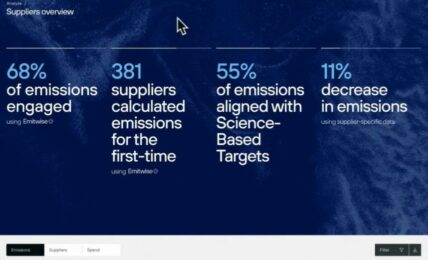By: Brett Weaver, ESG Tax Leader, and Richard Marcos, Tax Credits Practice Leader, KPMG U.S.
There’s no question that sustainability is an increasingly important consideration for businesses around the world. But with new green initiatives that use the tax code to offer substantial credits, like the Inflation Reduction Act, tax departments are entering the conversation in a whole new way. As a result, tax professionals will have to take on an expanded role in both data management and early strategic planning.
Organizations today are making growing commitments to environmental, social, and governance responsibility, and governments around the world are offering an array of incentives that are dramatically different from those of the past, in both quantity and quality. In the United States and Europe especially, green initiatives have put a lot of money on the table while making incentives more accessible—though also more complex and data-intensive. And because these initiatives are managed through the tax code, they have given tax professionals a central role in what must be a coordinated and proactive decision-making process, as well as offering them a seat at the sustainability table.
The Inflation Reduction Act brings real value to sustainability
In the United States, the Inflation Reduction Act (IRA) of 2022 directs nearly $400 billion in federal funding toward lowering the country’s carbon emissions by the end of the decade through clean energy, clean transportation, and other commitments to the renewables space. Its arrival on the scene has fundamentally shifted the landscape of tax incentives for sustainable practices.
Although the IRA focuses on clean energy, it also includes several social aspects of sustainability—things like bonus credits for paying a “prevailing wage,” or for including apprenticeships in work that’s being done, and even for locating projects in a brownfield, where there was a hazardous substance, pollutant, or contaminant in the past (e.g., a coal mine). There are also similar bonuses for basing a facility within a low-income tract and using domestic materials such as U.S. steel and iron.
For companies, these credits, grants, and incentives—and their complex qualification requirements that require extensive evidentiary support—can quickly become a data-management story. But it’s a story worth telling well. Getting the details right, with proper documentation, can make a significant difference in the size of the benefit. Companies that navigate this landscape strategically can see benefits totaling 50% of the cost of building a facility. This, in turn, can translate into many millions of dollars in government funding.
Improved access
In addition to being more varied, credits are now also far more accessible. In the past, companies might generate credits but would often struggle to benefit from them, which often required jumping through complicated hoops. In short, credits today are easier to monetize. Years ago, a hospital that usually didn’t pay tax couldn’t benefit from the credit if it installed solar panels on its roof. Today, however, it can take the credit, monetize it immediately, and use the cash to hire more critical healthcare workers.
While organizations can continue to also access other tax credits, the advantage of the IRA is that it builds its new incentives directly into the tax code. That allows every taxpayer to apply for the same credits, making them more broadly accessible than previous discretionary funding programs.
A new role for tax
So, what does this all mean for corporate tax departments? Well, at the end of the day, it’s the tax professionals who have to get the numbers right, by asking (and answering) the right questions: Was the prevailing wage met? How many apprenticeships are required? What percentage of the iron was domestic? And it’s the tax department that must ensure the documentation and support is there to back up those claims. Data management, then, takes on a whole new importance for the tax professionals of today.
Early engagement is key to good data management. The questions that arise require close coordination across departments. But unlike in the past, when the tax people were often locked out of early project planning by confidentiality considerations, optimizing these new credits requires bringing tax into a company’s green initiatives from the earliest stages. Those early decisions—how you build a facility, add capabilities, or electrify your fleets—can add up to a significant percentage of your company’s transition to sustainability.
As governments increasingly use the tax code to create compelling but complex new incentives for sustainable practices, companies wanting to optimize their credits need to adjust their early decision-making and view the tax department as a vital partner in planning early on.



